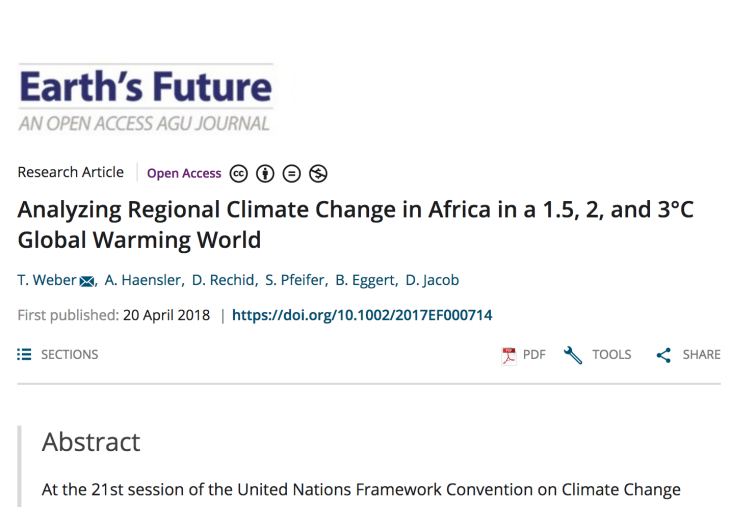Analyzing Regional Climate Change in Africa in a 1.5, 2, and 3°C Global Warming World
Regional climate in Africa may change under higher global mean temperatures

In a new study published in Earth's Future, Torsten Weber, Andreas Hänsler, Diana Rechid, Bastian Eggert and Daniela Jacob from GERICS present the results of their research on the effects of 1.5, 2 and 3 ° C higher temperatures for Africa.
At the 21st session of the UNFCCC (United Nations Framework Convention on Climate Change) Conference of the Parties (COP21) in Paris in late 2015, an agreement to strengthen the effort to limit the global temperature increase well below 2°C was decided. But even if global warming could be limited, some regions might still be substantially affected by climate change. This applies especially to continents like Africa, where the socio-economic conditions are in particular strongly linked to the climatic conditions.
Scientists at GERCIS now answered the question how the regional climate in Africa under a 1.5°C, 2°C, and 3°C global warming scenario may change. They analysed different climate indices assigned to the sectors health, agriculture and infrastructure. For this purpose, an ensemble of 10 different regional climate model simulations conducted in the WCRP framework CORDEX (Coordinated Regional Climate Downscaling Experiment) was investigated.
The results show that the African continent, in particular the region between 15°S and 15°N, has to expect an increase in hot nights and longer and more frequent heat waves - even if the global mean temperature increase will be kept below 2°C. These effects intensify, if the global mean temperature exceeds the 2°C threshold. Moreover, the daily rainfall intensity is expected to increase with increasing global warming. This affects especially the African Sub-Saharan coastal regions. More detailed information can be found in the open access article published in "Earth’s Future".
